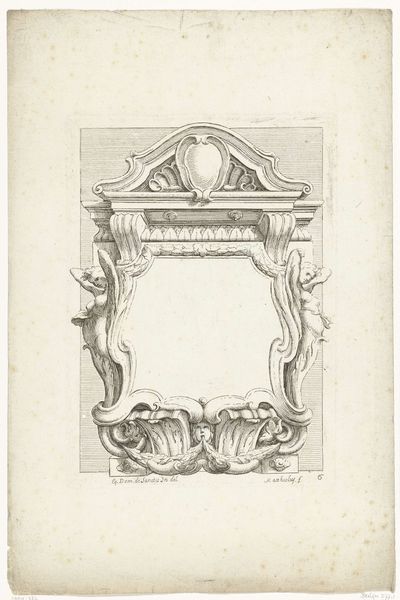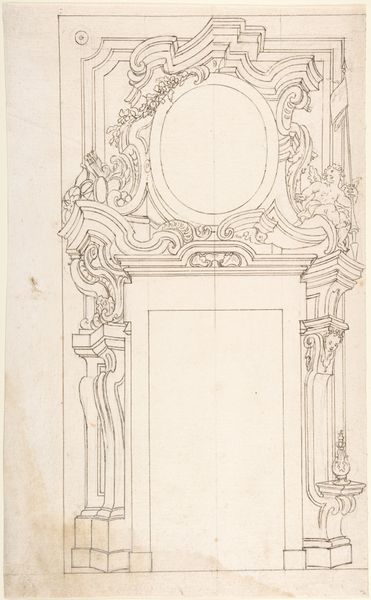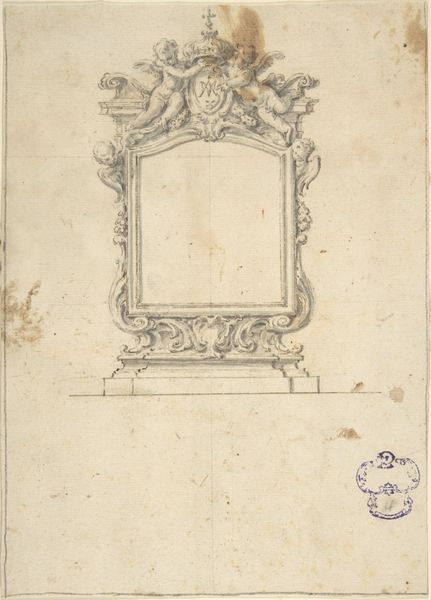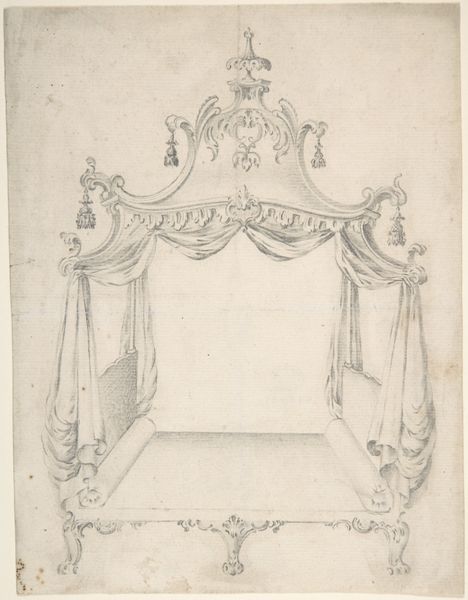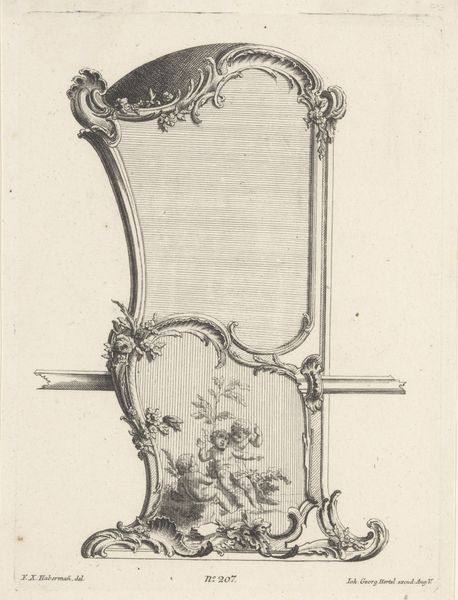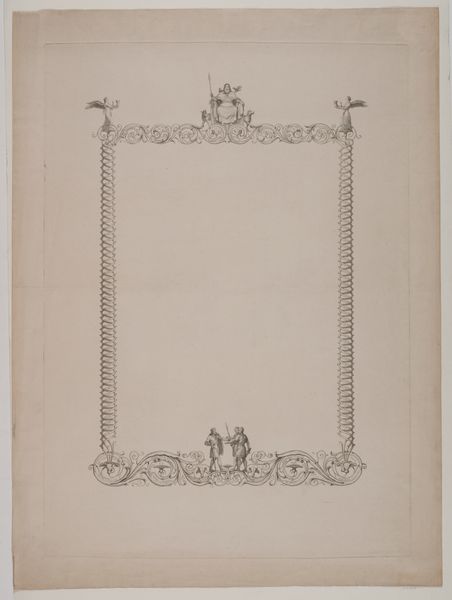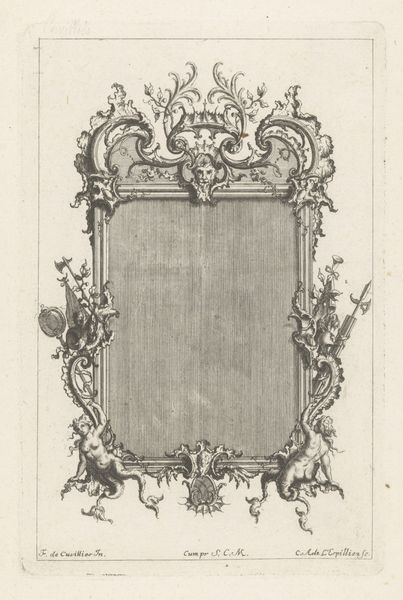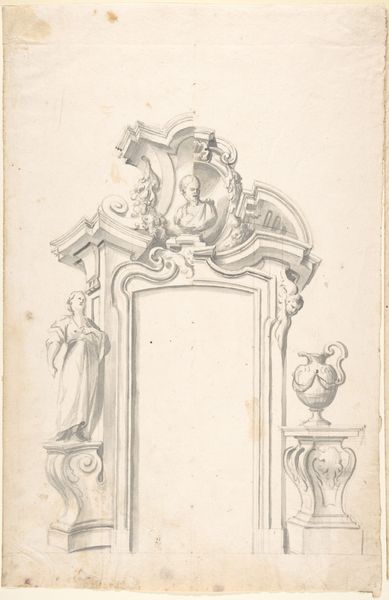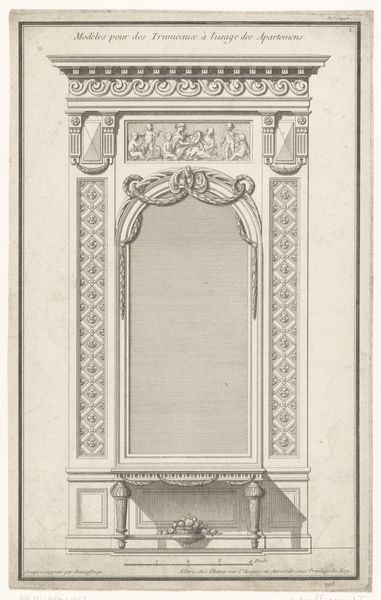
Omlijsting met een adelaar en twee putti met snaarinstrumenten 1751 - 1816
0:00
0:00
Dimensions: height 368 mm, width 250 mm
Copyright: Rijks Museum: Open Domain
Editor: Here we have Reinier Vinkeles’ “Omlijsting met een adelaar en twee putti met snaarinstrumenten,” an engraving created sometime between 1751 and 1816. It’s so delicate, with the fine lines of the engraving giving it an ethereal feel. What's your take on this piece? Curator: What I see is a reflection of power and privilege carefully packaged within seemingly innocent, decorative elements. Consider the eagle, a recurring symbol of empire and authority, perched atop what appears to be a frame ready to display…what? Whose image? Whose story? Editor: That's a really interesting point. I was focused on the cherubs with their instruments, thinking about music and beauty, but the eagle definitely changes the context. Curator: Exactly! The cherubs and musical instruments lull us into a sense of idyllic harmony, perhaps even divine blessing, but the eagle reminds us of the often-violent realities that underpin such seemingly innocent scenes. This tension—between beauty and power, innocence and dominance—is central to understanding the art of this period. Whose stories were silenced to create these visions of harmony? And how can we, today, amplify those voices? Editor: So, you're suggesting we look beyond the surface-level beauty and consider the power dynamics at play? Curator: Precisely. And think about what’s *not* shown within that central space. Who is excluded from this framed narrative? This engraving, therefore, is not just a pretty decorative piece, but an invitation to critically examine the narratives and ideologies it upholds, however subtly. It asks us to be active viewers. Editor: Wow, I’ll never look at cherubs the same way again! I always thought of engravings as just pretty, but it's amazing how much history and politics can be embedded in the imagery. Curator: Exactly! And by recognizing these historical biases, we become better equipped to challenge similar inequalities that persist in our contemporary world. Art then becomes a mirror reflecting our own complicities and responsibilities.
Comments
No comments
Be the first to comment and join the conversation on the ultimate creative platform.

